Why is roofing insurance so expensive? This is a question I get asked a lot. Hello, I’m Mike Di Pinto, Ferrari & Associates’ Vice President of Construction Insurance, and in this article, I’ll explain why roofing insurance is costly and what factors contribute to those high premiums. Roofing is a high-risk profession due to the inherent dangers involved in working at heights, exposure to unpredictable weather, and the physically demanding nature of the job. These factors lead to increased risks of accidents, injuries, and property damage, making roofing one of the most hazardous trades in construction.
This article is the first in a series of blog articles on roofing insurance, roofing insurance costs and factors affecting roofing insurance. In my next article, I’ll discuss practical strategies to help roofing contractors lower their premiums while maintaining robust coverage. But before we get to that, let’s answer the question why is roofing insurance so expensive and priced the way it is.
Why Is the Roofing Profession So Risky?
Roofing consistently ranks among some of the most dangerous jobs, with significant risks stemming from workplace injuries, liability exposures, and challenging working conditions.
Roofers and Workplace Injuries
Roofers face numerous hazards, from working at heights to using potentially dangerous equipment like ladders, scaffolding, and nail guns. Falls remain the leading cause of construction-related injuries and fatalities. Even with proper precautions, a wet, icy, or unstable roof increases the risk of serious accidents.
A roofer friend of mine told me that in Ontario, roofing companies can mitigate some risks through COR Certification (Certificate of Recognition). COR Certification demonstrates a comprehensive health and safety management system. Achieving COR not only reduces accidents but also positions your company as a lower risk to insurers, potentially lowering premiums.
Roofers Insurance and Liability Exposure
Roofers are also at higher risk of causing property damage or injuries to third parties:
- Improper Installations: Poor workmanship can lead to leaks, water damage, or structural failures, resulting in costly claims.
- Falling Debris: Tools or materials falling from the roof can injure bystanders, damage vehicles, or harm neighboring properties.
Insurers account for these risks by charging higher premiums for liability coverage. Demonstrating reliability and investing in worker training can help reduce these risks over time.
Roofing Insurance Premiums and the High Cost of Claims
Roofing claims often involve substantial payouts:
- Injuries: Long-term medical expenses and disability claims from workplace injuries are significant.
- Litigation: Disputes over poor workmanship or damage caused during installations often lead to high legal fees.
- Repairs: Issues like roof leaks or structural damage can result in expensive repairs, further driving up claim costs.
For insurers, the likelihood and severity of claims increase their financial exposure, which is reflected in higher premiums.
Roofing Risks Associated with Weather and Environment
Roofers work in challenging environments. Wind, rain, snow, and extreme temperatures amplify risks during installations. Each roofing job presents unique conditions, such as deteriorated roofs or hazardous materials, adding complexity and unpredictability. Insurers price policies to account for these risks.
The Impact of Roofing Methods and Materials on Roofing Insurance
Certain roofing methods and materials come with their own risks:
- Torch Roofing: This method uses open flames, increasing fire hazards.
- Steep Roofs: Greater fall risks make these projects more dangerous.
- Asphalt Shingles: While affordable, they are prone to weather damage, leading to frequent claims.
Safety and Training: Keys to Lowering Risks and Lowering Roofing Insurance Rates
Roofing companies that prioritize safety and training are better positioned to lower risks and reduce premiums. Investing in Red Seal Certification for workers ensures high-quality workmanship and a commitment to safety, setting your business apart from competitors.
So if you are asking why roofing insurance is so expensive, this article has hopefully given some insights! Roofing insurance premiums are high due to the industry’s collective risks. However, proactive measures like achieving COR Certification, adopting safe methods, and maintaining strong safety records can help your business reduce claims and improve insurability.


